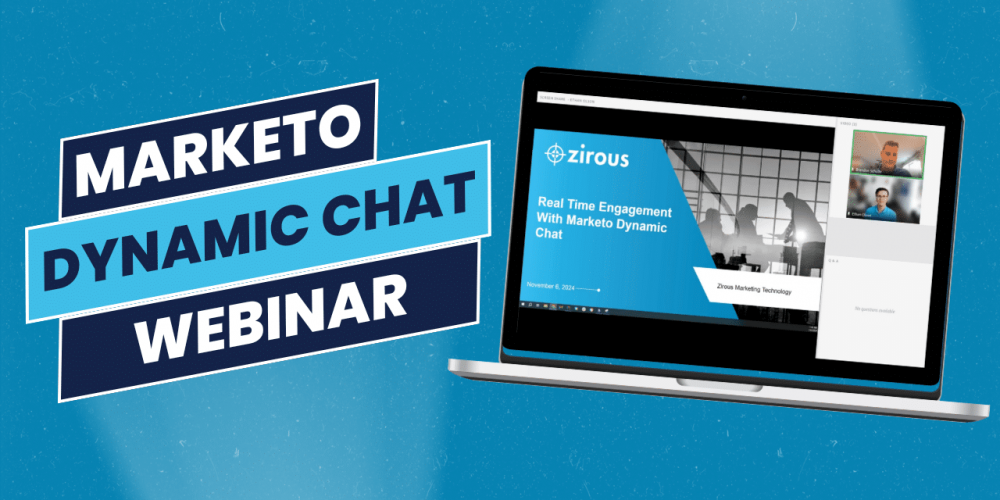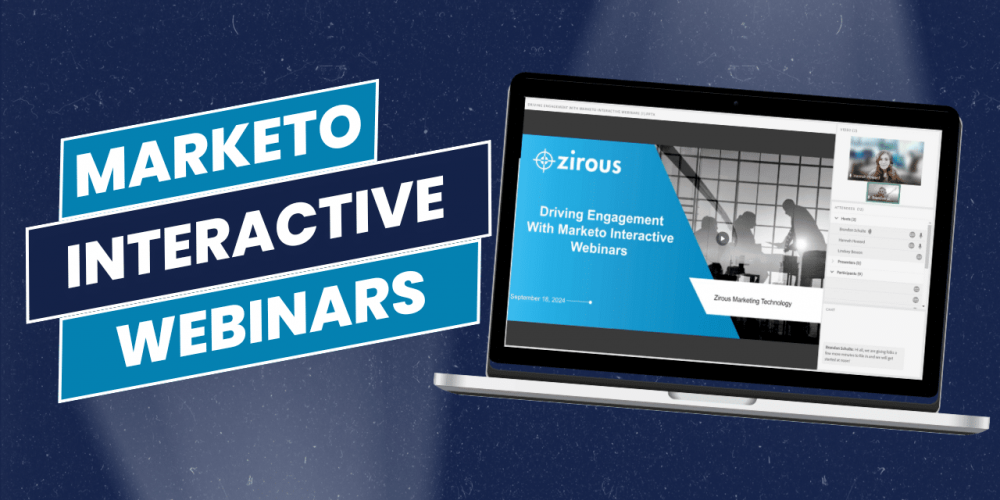Looking to enhance your website's engagement and capture valuable leads in…
It’s estimated that the information security and risk management market will exceed 267 billion dollars by 2026. And while that market cap is large, with more than 3000+ players in the space offering technology solutions for companies, to take advantage of this market opportunity it is critical for revenue operations leaders at these companies to establish the processes, technology and culture that revolves around their customers and delivers the experience that is expected.
The customer journey should be seamless, regardless of how customers interact with the brand. Companies must develop the ability to:
- Improve the quality of customer interactions.
- Provide personalized and relevant omni channel communication to customers.
- Increase the perceived product value for customers.
- Use automation to scale communication across platforms.
This must be accomplished while reducing key barriers to success, including:
- Integrating disparate systems.
- Attributing revenue (direct and indirect) to marketing (spend.)
- Increasing marketing ROI.
- Improving decision-making.
- Improving marketing efficiency.
We recently sat down with Joshua Wesley, Manager of Enterprise Sales Development at Cloudfare to discuss his experience on leverage demand generation tools like marketing automation, CRM and BI tools successfully. At Vertify we worked with Wesley when he was in a similar role at Eagle Eye Networks as he led a project to integrate Hubspot and Zoho while streamlining the entire revenue stack.
He and his team evaluated marketing platforms prior to selecting Hubspot to manage marketing automation. During the sales process his technology team had frank conversations regarding integration needs as they looked to connect Hubspot to other core platforms like Zoho (their CRM system). While the vendor made it seem like native connectors and APIs were all they would need, Wesley quickly learned that was not the case.
“When we were making the purchasing decision we had our IT team on with the vendor and they made it seem so simple that we didn’t think we would need an integration tool,” Wesley said. “A lot of people when they start the journey of automating systems they assume that they will get everything that they will need with native connectors and we found that simply isn’t the case.”
This is a common problem that we see working with companies of all shapes and sizes. Often the technology vendor makes it seem likely integration is “plug and play” when in fact many business cases need more robust integration to manage complex challenges.
“The native connectors that many of these systems (CRM, ERP, marketing automation, ecommerce, etc.) are relying on to bring the buyer journey into one story is completely insufficient,” Wesley said. “A lot of people have learned to live with that inefficiency by using workarounds or by going to spreadsheets. Sales and marketing professionals focused on revenue operations have become so accustomed to workarounds to get the story into one frame that they don’t realize that something like Vertify would completely solve that for them. And that’s not just the security but any revenue team needs Vertify if they are working in multiple platforms.”
Once his team discovered this integration gap they embarked on an integration evaluation to solve this problem. Finding the right solution was extremely important to get the value out of investments made in products like marketing automation and CRM. They also needed to give front line users from sales and marketing the right tools and information to effectively do their jobs.
“We first explored building an internal home brewed connector,” Wesley said. We discovered that it was going to be a lot of resources to manage the connector. In addition they would need a technical resource that was very savvy to run the system.
“Then we explored hiring an external resource to build a custom integration. This would have been a huge upfront cost and then we would need to maintain – either ourselves or pay a vendor to maintain the integration.”
That’s when they discovered Vertify, a revenue operations automation platform built to allow customers to customize workflows as needed to meet business requirements. Grounded by the philosophy that all three key revenue teams—sales, marketing, and customer success—should be aligned by process and technology, Vertify provides business automation software that easily syncs, cleans, and curates customer data within existing revenue tech stacks to:
- Identify bottlenecks between teams
- Unlock new revenue potential
- Maximize your existing revtech ROI
- Respond to customers quicker
- Scale operations to achieve faster results
This allowed Eagle Eye the best of both worlds – a low code, no code tool that already had pre-built connectors with their system and an easy to use interface that non-technical people could manage.
Furthermore Vertify would maintain those connectors as integrated systems made enhancements. The Vertify subscription would be a fixed cost over the life of the contract which allowed them to understand their true cost of ownership.
For Wesley and his team at Eagle Eye, using Vertify was a game changer when it came to business analytics. Once the data started flowing between their systems and they began to see a 360-degree view of their business, they found huge benefits that impacted everything from strategic investments to resourcing decisions and strategy. Additionally, synthesizing the data between platforms was key to getting the right information to key leaders that told a story of what was working for their business and what wasn’t.
“The first thing it did was it allowed my team to have one dashboard to manage the data – it brought us into one place,” Wesley said. “The marketing team wanted to use the reporting in Hubspot and our sales team was focused on the reporting in Zoho. The data sometimes wouldn’t tell the same story. Vertify allowed us to come into one platform to manage the story together and that was pivotal for our business.
We started to discover that parts of our business we thought were performing well weren’t. A good 20% of our business wasn’t being accounted for because we were missing data so our leadership team was blind to how the business was running. We also weren’t able to implement more efficient processes. We didn’t have a repeatable way to scale. It was critical for us to come to the table to better standardize how we looked at data and measured the business.”
The last ingredient for success was a trusted consultant to work with Wesley and his team to configure the integration platform based on business requirements. There he turned to longtime Vertify partner Zirous, an IT consulting firm specializing in integration, marketing technology, data architecture and analytics. Working with Senior Integration Consultant, Michael Ha, the Eagle Eye team was able to get up and running on Vertify quickly, and even more importantly correctly.
“The experience working with Mike was absolutely phenomenal,” Wesley said. “I don’t know how Eagle Eye as a company could have gotten a good grasp on how we managed our data. I don’t know how we would have been able to do it without Mike. He held our hand throughout the entire process. He helped us have some really tough conversations internally on how we needed to align. I would say before Mike when things didn’t work well we blamed external factors – it was CRM or the tools fault – we didn’t hold a mirror up to ourselves to see maybe it’s a bad process that we came up with or maybe we are thinking about this the wrong way and he really helped with that.”
Together, the Vertify and Zirous teams have helped countless other organizations realize similar results and grow their revenue while increasing efficiency and transparency within the business. Contact us to learn more about how Vertify and Zirous can support your workflow automation in the security space or any other industry for that matter.




This Post Has 0 Comments